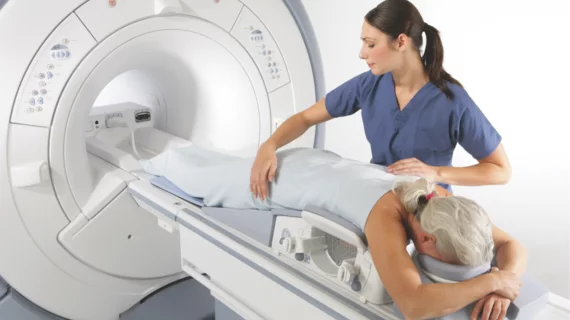Breast MRI screening cuts cancer mortality rates in half for women with lesser-known gene mutations
Breast cancer mortality of women with lesser-known gene mutations could be cut in half if they were to undergo annual MRI screenings, according to new research published in JAMA Oncology.
BRCA1 and BRCA2 are the most widely known gene mutations among the general population. However, they aren’t the only mutations that carry an increased risk of invasive breast cancer. ATM, CHEK2 and PALB2 genes are collectively as common as BRCA1 and BRCA 2 but until recently, research pertaining to how to manage the alterations has been lacking.
This is what prompted researchers to explore screening guidelines for individuals in this high-risk demographic.
“Screening guidelines have been difficult to develop for these women because there haven’t been clinical trials to inform when to start and how to screen,” study lead author Kathryn Lowry, MD, assistant professor of radiology at the University of Washington School of Medicine, and co-authors explained.
In collaboration with the Cancer Intervention and Surveillance Modeling Network (CISNET), the Cancer Risk Estimates Related to Susceptibility (CARRIERS) consortium and the Breast Cancer Surveillance Consortium, researchers examined how various screening methods, including a combination mammography and breast MRI, would benefit women with ATM, CHEK2 and PALB2 gene mutations, thus laying the groundwork to develop screening guidelines.
The experts included thousands of cases from 12 population-based studies to compare the screening performances of mammography and MRI. Recently published data for screening performance and age-specific risk estimates from CARRIERS were entered into a breast cancer simulation model to produce their metrics. Similar simulation models have been used to inform previous screening guidelines.
The current model revealed that lifetime breast cancer risk for women with ATM, CHEK2 and PALB2 was 20.9%, 27.6% and 39.5%, respectively. For women between the ages of 40 to 74, mammography reduced mortality by 36.4% to 38.5%. Annual MRI screenings beginning at age 35, and being followed by annual mammograms and MRIs, were said to reduce mortality by 55.4% to 57.6%. The MRI screening numbers were very similar when the exams were initiated at the age of 30.
“This modeling analysis suggests that screening MRI starting at age 30 to 35 years may substantially reduce breast cancer mortality for women with moderate- to high-risk pathogenic variants for breast cancer,” the doctors wrote.
The doctors also noted that starting mammograms at the age of 40 for women with the genetic variants did not provide additional benefits and actually led to higher rates of false positives.
You can view the detailed study on JAMA Oncology.
More on breast cancer screening:
BRCA cancer screening recommendations
BRCA inherited and other gene mutations

